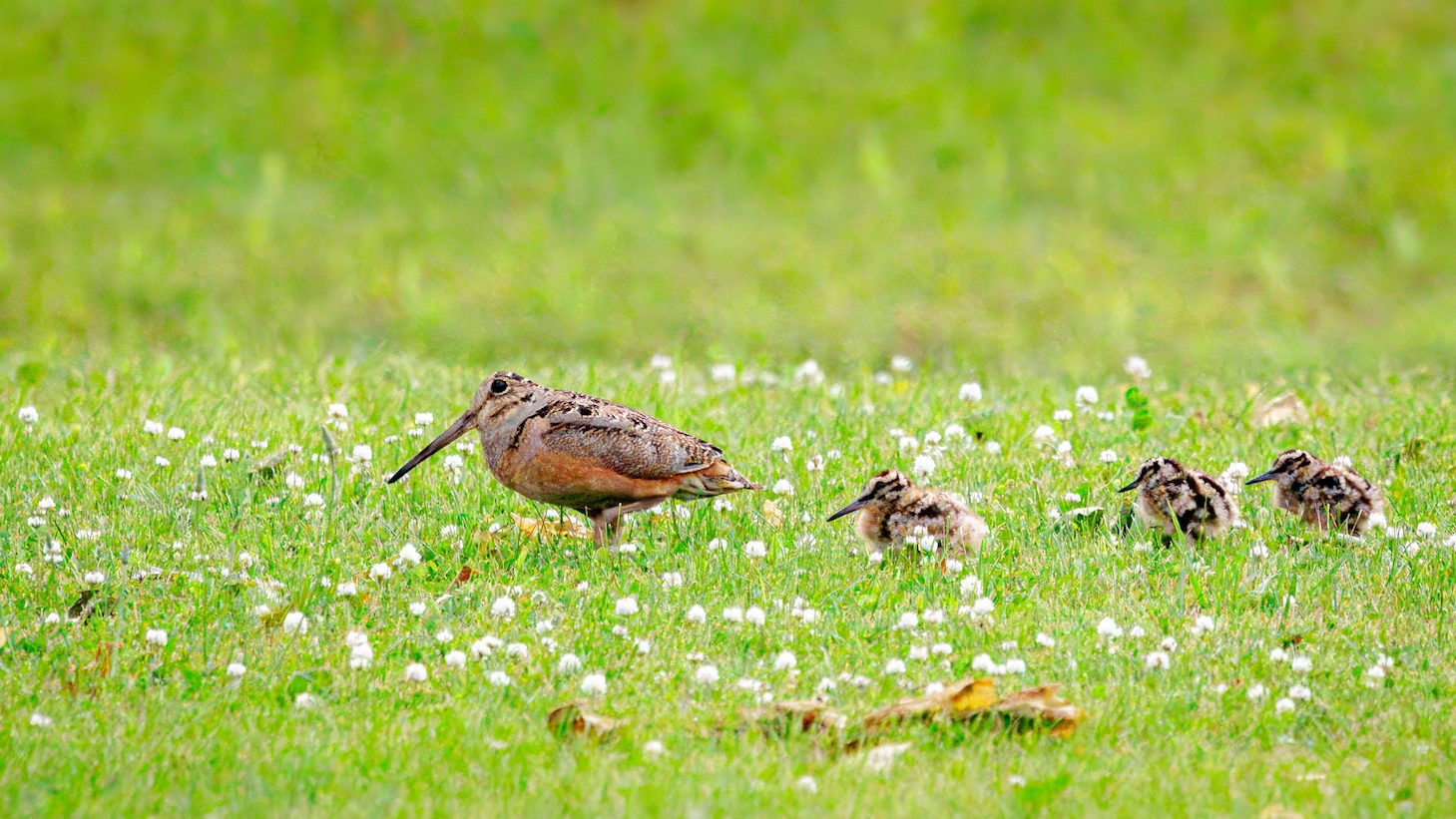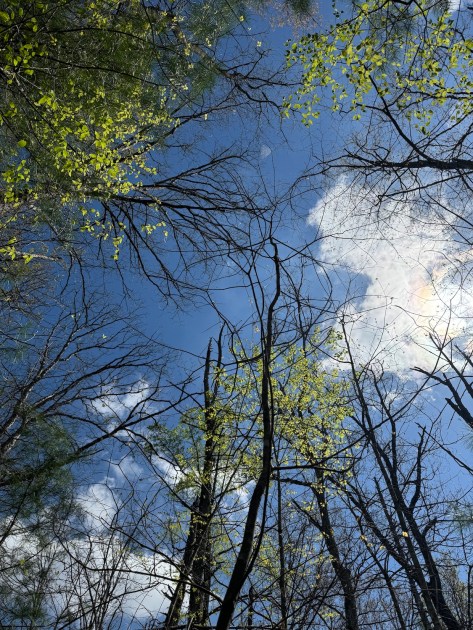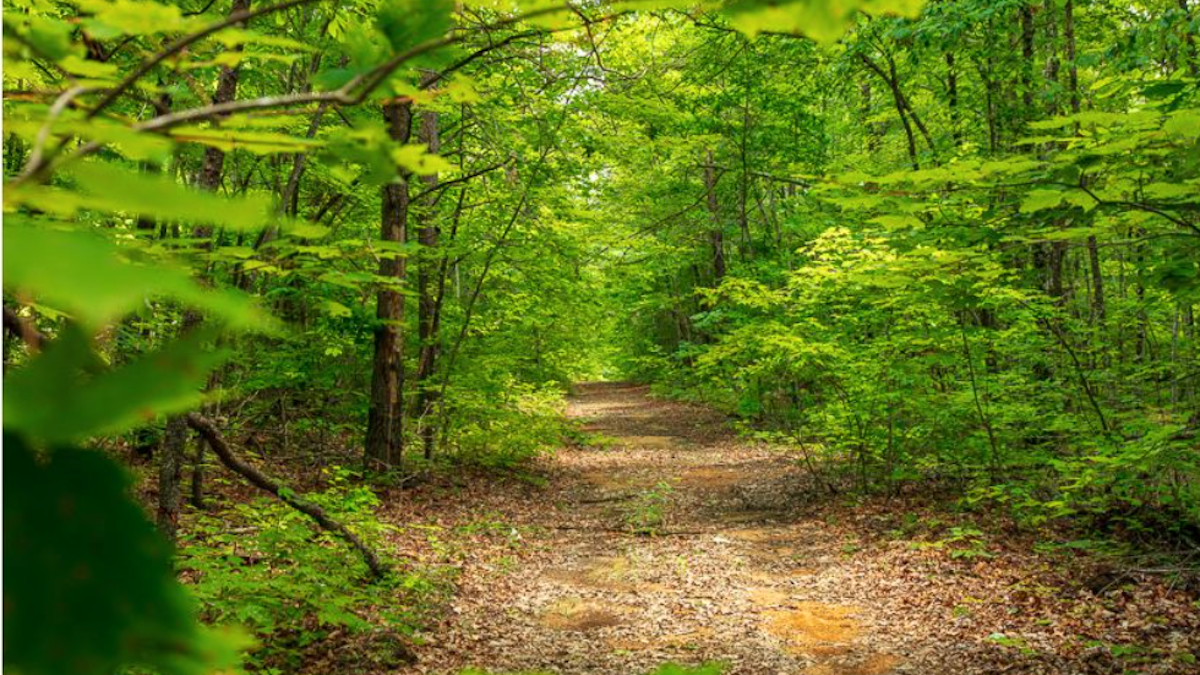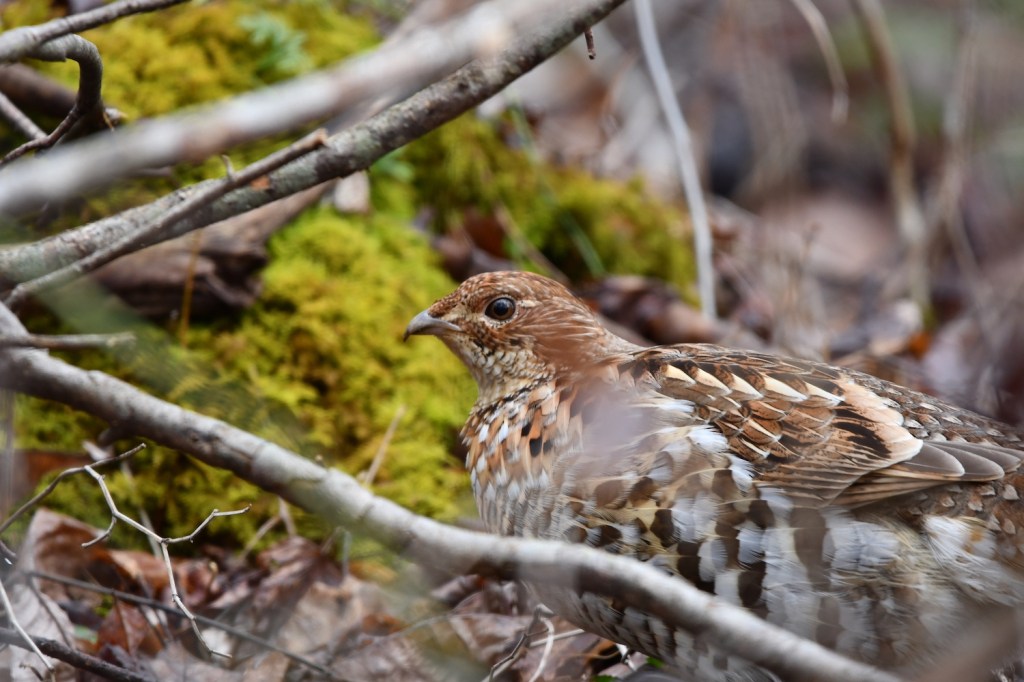Forester Britt Townsend tells me she’s saved the best for last. We had just spent the day at The Nature Conservancy’s Bridgestone Nature Preserve at Chestnut Mountain in Tennessee. It had already been a special day, hiking through forest, enjoying scenic overlooks, learning about forest restoration sites.
Now we make our way down a narrow, rocky canyon, salamanders scurrying into crevices as we pass. We walk slowly along a cliff face and approach to a narrow cave in the rock. There, etched on the surface, are petroglyphs etched by the Mississippi Mound Builder culture thousands of years ago. As always when confronted with such ancient history, one wonders what the land would have been like when this artwork was created.
Today, we look out over dense forest from the viewpoint, seemingly undisturbed. But that’s not the forest the Moundbuilders would have known.
“These petroglyphs were meant to be seen,” says Britt Townsend, conservation forester for TNC, “For thousands of years, this was likely like a billboard.”
That would have required a much more open forest. And it speaks to the fact that Indigenous people managed the forest for millennia.
Ecologists refer to a condition known as “shifting baseline syndrome.” Basically, it means the conditions you are born into are what you accept as “normal.” For many in the southern Appalachians, a dense forest is “natural.” But historical evidence suggests otherwise.
Restoring a healthy Appalachian forest has many benefits, for wildlife from ovenbirds to woodcock, as well as for outdoor recreation and local communities. And to conduct that restoration means bringing diverse partners together for a common cause.

A History of Land Clearing and Fire Suppression
A common purpose in restoring healthy forest is why The Nature Conservancy (TNC) and the Ruffed Grouse Society-American Woodcock Society (RGS-AWS) partnered in the southern Appalachians, recently formalized with a strategic document outlining how the groups will work together.
RGS-AWS has a mission to “improve wildlife habitat and forest health for ruffed grouse, American woodcock and all forest wildlife. We promote forest stewardship for our forests, our wildlife and our future.”
The organization is supported mainly by bird hunters, many of whom have seen their favorite quarry decline as forests mature at a uniform rate. TNC has a history of working with hunting and angling organizations, believing tackling significant conservation challenges means finding common ground.
Forest restoration in the Appalachians is one of those challenges that can only be achieved by finding that common ground and thinking creatively.
The story of the southern Appalachians – and many forests across the United States – is one of widespread logging between the early 1900s and 1940s. That was followed by the “Smokey Bear era” of fire suppression.

“Today’s forest is a legacy of that large-scale land clearing and fire suppression,” says Nick Biemiller, regional forest conservation director for RGS-AWS “We have a landscape today dominated by 80- to 120-year-old forest, with closed canopy. Historically, there would have been a lot more open forests, woodlands and savanna.”
Today, many people think forests should be left alone, as that is more “natural.” There are those who think management strategies like harvesting trees, using herbicides and prescribed burns are interfering with nature. That’s where TNC and RGS-AWS share a common vision: for a healthy and resilient forest diverse in flora and fauna.
“You can’t lock up a forest and throw away the key,” says Mark Rogers, TNC’s Central Appalachians forest manager. “That’s not going to benefit wildlife. That forest is not going to be resilient in the face of climate change. If you want to keep a forest healthy, you have to manage it.”
That doesn’t mean turning back the clock; in a landscape so altered, it’s impossible. “The past is a useful but imperfect baseline to inform the future,” says Sean Barry, forest conservation coordinator for RGS-AWS. “We’re using science to manage for a resilient forest that can evolve and adapt for the future.”
Tackling this challenge is where partnership becomes so vital. There’s the old cliché that “great minds think alike” but in this, it’s more “great minds think together.”
“Working in a silo, you don’t get the creativity and innovation you need to address conservation challenges,” says Townsend.

Restoration at Work
An important demonstration project is occurring at Tennessee’s Catoosa Wildlife Management Area, a partnership between Tennessee Wildlife Resources Agency, TNC and RGS-AWS.
“TWRA has the right location and the local knowledge, TNC brought funding and modeling and RGS-AWS is the partner who can get the work done on the ground,” says Townsend. “They have the people to get the work done.”
During my field tour, I had the chance to visit Catoosa, learning about the demonstration project around managing for late-secessional forest, so important for birds like ovenbirds and cerulean warblers. Given that ruffed grouse and woodcock need young forests, why is RGS-AWS involved in late-secessional forest management?
“Forest conservation can’t be about single species conservation,” says Biemiller. “Many species, including grouse and woodcock, benefit with structural and age-class diversity in forests.”

With climate change, the importance of a healthy forest becomes even more apparent. “Ruffed grouse are a climate-sensitive bird,” says Biemiller. “Part of what we’re addressing is risk and uncertainty. How can grouse adapt to this uncertain future? It’s more likely they can adapt with healthy forest conditions.”
Similarly, groups like TNC are not focused specifically on game species, but Townsend says that effective conservation has multiple benefits. “Gamebirds can be an umbrella species,” she says. “By creating habitat for these species, we’re benefiting a lot of other species and we’re benefiting forest health.”
During my tour at Catoosa, we talked a lot about active management, including thinning, herbicide application and controlled burns. The team was managing in 30-acre blocks, conducting thinning that was not the usual “high grading” – removing the most valuable species – but managing for tree species of high value to wildlife.
“Our long-term goal is to create a forest with a mix of ages,” says Luke Haddon, TWRA’s East Tennessee forest supervisor. “Using a light touch with active management, we can steer the forest to what we want it to be. We want to thin to release young oaks while removing other species.”
At one point, the forest at Catoosa and throughout the region would have burned much more frequently. More than 50 percent of the landscape in the southern Appalachians is fire-adapted. “What you see here is a highly manipulated forest, and it’s been that way for a very long time,” says Haddon.

For the Love of Grouse
Still, it can be difficult for people to see the forest they love be cut or burned. It does not much look like conservation. TWRA receives letters about the “destruction of the Catoosa forest” when trees are thinned or fires burn. But, here, too, game species can be an entry point.
“At face value, people have a view of what the forest is, and it’s based on that closed-canopy, 80- to 120-year-old forest,” says Zac Chandler, Tennessee forest wildlife specialist. “But when I talk to landowners, they’ll say things like ‘we used to have grouse here?’ That’s an opening to talk about why they don’t see grouse any more. We know that species are declining due to a lack of habitat and diversity. We need to tell that story.”
Catoosa is designed as a demonstration project, and the plan is to show how these forest restoration techniques could be applied to other public and private lands. “There are landowners who don’t want heavy timber harvesting on their property,” says Townsend. “The management at Catoosa has a light touch. That could be more appealing to landowners. They care about aesthetics and wildlife. It’s a way to introduce them to forest management.”

TNC and RGS-AWS may have different ways internally of talking about the forest. TNC’s priority is “resilient and protected forests.” RGS-AWS works on Dynamic Forest Restoration Blocks. The organizations have different memberships, different strategic plans. But ultimately, the approach to forest conservation is complementary.
“We are aligned on forest conservation,” says Biemiller. “RGS-AWS doesn’t own the land we’re trying to influence. But we have the capacity to implement management actions. Working together, we can realize mutual goals.”
I could not agree more. I grew up in Pennsylvania where as a kid I hunted (often unsuccessfully) plentiful ruffed grouse. When I return, I don’t see birds in those forests. As a birder, I am also well aware of the widespread decline of many songbird species. I see the challenges the forests face and know it can only be addressed by finding common ground.
“RGS-AWS does incredible work and their work is benefiting a wide variety of species,” says Townsend. “I think the world of them.”
Biemiller voices similar sentiments. “Ultimately, we all want a healthy forest,” he says. “We recognize wildlife needs young forest. Wildlife needs late-secessional forest. Both TNC and RGS-AWS recognize this. We can get more done and be more effective by working together than either of our organizations could do on their own.”




This was such a well-written and engaging piece.